A Database Management Software (DBMS) is a tool that is used to create and manage data. Additionally, it enables users to instantly access or edit data. But a business should choose its database management software based on its own needs and goals. With database management software, a business can quickly add to, change, define, or send queries to an administrative database. Also, this could be a game-changer for businesses that want to use different data formats and retrieval methods to their advantage.
15 Database Management Software | TendingTech
To assist you in choosing database management software examples that meet your technical and professional goals, we’ve listed the top 15 database management tools for 2022.
What is Database Management Software?
A database management software (DBMS) is a consistent piece of technology that helps businesses optimize, manage, store, and retrieve data from their primary databases. The user interface of the database management software uses a methodical approach that can handle a lot of work with a lot of data. A DBMS software list is made up of three important parts: the data, the database schema, and the database engine. The engine makes sure that the data may be read, locked, and edited by users while the schema is in charge of the logical structure. It’s interesting to note that applications may also be used to store database data. Imagine that your main database and your application software are connected by a DBMS. Types of database management systems let you recover, comply, or just keep an eye on corporate activities because they can be scaled up and changed.
The Industry’s Use of a Database Management System
The centralized process of the free database management software, which lets many users access data from different places, is what makes it useful. The database software free download can also restrict each user’s access to data and capabilities. Database software comes in a variety of forms. Thanks to the types of database management systems with examples, end users have the freedom and convenience to store logical or physical data. As a result, neither the structural changes nor the actual placement of the data needs to worry consumers. For example, when developers use an Application Programming Interface (API), they don’t have to make changes by hand. Instead, changes are made to the database automatically.
Choosing the Best Database Management Software
It would be a good idea to look for database software definitions and examples with a variety of database solutions, whether you manage a small or established organization. When choosing, you should think about the type of product or service your business offers, such as how complex it is or how much better it can be scaled. Here are 15 of the top database management software (DBMS) that can boost productivity and help your company reach its full potential:
#1. Improvado
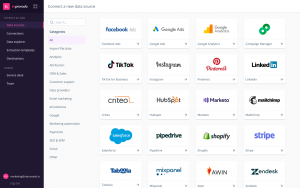
Improvado is a ground-breaking database management software for revenue data that houses both database and ETL functions in one piece of software. The platform gathers marketing and sales information from more than 300 data sources and stores it in one location. The data obtained from various platforms have to be linked and consolidated. Improvado has features that automatically change and clean data to get the best insights for further analysis. The marketing and sales teams don’t have to be limited to a single warehouse solution thanks to Improvado. Access to managed BigQuery, Snowflake, or Clickhouse database management software is made available via the platform.
The key distinction for marketers is that managing DBMSs does not require technical know-how or human resources. Teams receive a fully functional, zero-code interface where they may work. Also, compared to other data warehouse systems, Improvado is less expensive and is made to handle complex data transformations. On August 1, 2010, this entry was published.
Pros
- Automated procedures for the deduplication, cleansing, and transformation of data
- Data extraction and quick integration from more than 300 data sources.
- Effective storage powered by Clickhouse
- Building real-time marketing dashboards through integration with 10+ visualization tools
- It is easy to access data that is ready for analysis.
Cons
- When comparing data, the most recent items are frequently reversed.
#2. Microsoft SQL Server
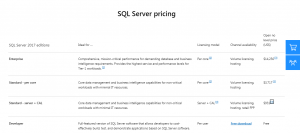
One of the top database management software in use today is Microsoft’s SQL Server. The tool’s “free” branding undoubtedly draws in a sizable user base. Its specially created graphical integration of the greatest database designs has saved customers priceless time. The diagrams you create using this tool may also be quickly uploaded to a project library, whether it is new or already exists. With the help of the Object Explorer tool, end users can see how the tables are made.
Template Explorer, on the other hand, is a group of script objects that can be used to look up different names in the database system. A connected object or group’s views and scripts can also be combined thanks to the special containers that the SQL Server produces.
Pros
- A new database server may be easily set up from scratch.
- sans syntax, creates different designs, tables, and data views.
- It may connect with other programmes and handle complex queries.
- It develops sophisticated queries using the Developer Network feature.
Cons
- The user interface of the compact package is not user-friendly.
- Long searches sometimes take longer to execute than anticipated.
- With a selected schema, data upkeep becomes problematic.
- It urgently requires a new firewall defence system.
#3. Postgre SQL
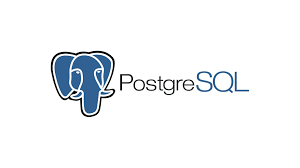
The energizing indexing and configuration possibilities of the open-source database management software attract attention. If you often import or export data as part of your company’s operations, Postgre SQL is the right choice. The programming languages Python and JSON are currently supported by Postgre SQL. Users are free to build NoSQL databases even though it is a relational database solution. In addition, the open-source community has produced a huge selection of plug-ins to expand the software’s capabilities.
Pros
- Higher volume data management and storage
- processing of data that is more secure than others.
- Simple installation procedures for the Windows and Linux operating systems (OS)
- Access to useful resources, such as tutorials for the tool.
- Perfect for businesses that routinely work with large amounts of data.
Cons
- The manipulation of data is limited by the native interface.
- The inclusion of tiny datasets is slowed considerably by the tool’s sophistication.
- The software installation and configuration might take a while.
#4. My SQL
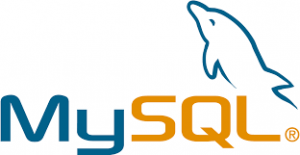
My SQL is a powerful tool for data productivity and high-speed data processing. Your databases’ security and scalability will improve thanks to the tool. A consistently affordable instrument provides technical assistance and mitigates potential dangers. Furthermore, complicated MySQL business applications may be deployed on high-volume company websites.
Pros
- Better data recovery options are available in the most recent 8.0 version.
- The fundamentals are simple to master, even without prior programming experience.
- Given the ability to alter data, open-source software is ideal for small firms and independent contractors.
- compatible with modern DBMS techniques in the industry.
- interaction with Apache web engines in a flash.
- Data development may be tailored for both light and heavy applications.
Cons
- Even after a restart or refresh, queries remain unresponsive.
- The use of third-party add-ons is overused.
- In the Linux OS, data processing might get challenging.
#5. Amazon RDS
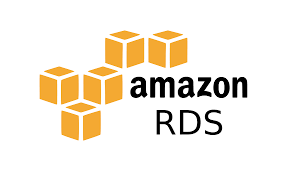
A top database management software is Amazon RDS (Relational Database Service). It includes a dedicated, secure connection, and an internal function that automatically backs up your data. Additionally, it is capable of resizing all of your database operations.
Pros
- Heavy workloads can be processed by users in a single database.
- The resources you have utilised must be paid for.
- You may use it to gain access to Microsoft SQL, Oracle, or MySQL databases.
- Programmers that need adaptability and scalable storage choices are drawn to point-in-recovery.
Cons
- It only offers a few auto-scale settings.
- No access to the actual server to inspect the server logs.
#6. Oracle RDBMS
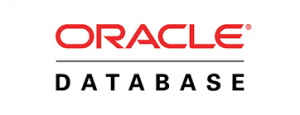
The most recent version of the Oracle RDBMS utility spans bigger databases, uses less storage space, is safer, and processes data more rapidly. It actually ranks among the most useful object-relational DBMS tools. Oracle RDBMS may be used with either a PC or a powerful supercomputer. For instance, the active designs cause the software to activate a certain referential system.
Pros
- Partitioning your data will provide you with more administrative control over it.
- streamlined business operations and data security.
Cons
- For small firms, the tool’s price range is disheartening.
- Client apps are frequently automatically hooked up.
#7. Razor SQL
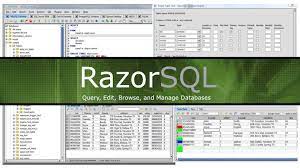
One of the most widely used database management software and query tools is RazorSQL. Users may verify columns, unidentified keys, structural indexes, schemas, and tables with this tool. According to your business needs, you may create, alter, or remove complete SQL statements. Spreadsheets in Excel, extended files, and data files with a fixed width can all be easily imported into the software. There are now more than twenty (20) programming languages supported by RazorSQL. It may compare the outcomes of searches over several databases and table data simultaneously. The software also doesn’t need any further manual settings, making it simpler to check a variety of databases.
Pros
- Automatic selection and copy mechanisms for various data types
- For projects, users can either make their own unique templates or use pre-existing ones.
Cons
- The installation and configuration processes take time.
- The command line may be used to do complex comparisons only by programmers.
#8. Microsoft Access
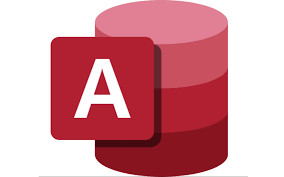
Microsoft Access only functions with the Windows OS. It’s a great tool for making custom databases in a variety of formats that fit the needs of your business. The IT industry can benefit from a reasonably priced database management software.
Pros
- Microsoft Access custom templates are a great way to add online databases and track, report, or share them with other users at the same time.
Cons
- Word, Excel, and Outlook from the Office Suite are fully accessible to users.
#9. SQL Developer
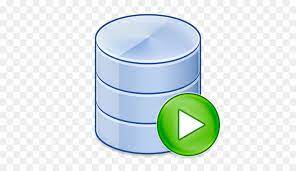
The open-source DBMS tool is a favourite among developers because it is one of the best DBMS tools for designing, building, and doing other database management software. Executing many queries quickly is the finest feature of SQL Developer. As a result, users create queries in a variety of file types, including PDF, HTML, XML, and Excel.
Pros
- It enables users to make Oracle Database data management simpler.
- End-to-end database applications can be run with SQL Developer.
- You may switch from Oracle to third-party databases with your database modelling solution.
Cons
- Operating system automation frequently modifies database requests.
#10. Informix

A commercial DBMS programme called Informix Dynamics Server is ideal for companies that require parallel and multi-threaded data processing. The software is perfect since it is scalable and offers excellent in-depth assistance.
Pros
- The performance of its Online Transactional Processing (OLTP) is superior to others.
- Scalability of tiny systems to distributed nodes with several layers
- In a time series, it can combine relational data.
Cons
- For small enterprises, the premium version is pricey.
#11. Altibase
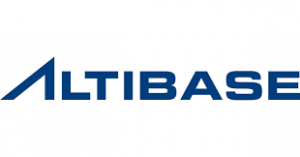
High-level data processing rates are provided by the open-source database management software. It also has a database that works in memory and can store a lot of information on a single drive. Altibase is actually one of the few hybrid DBMS technologies that have a lot of scale-out sharding options.
Pros
- It is more widely accessible across several businesses.
- Both the disk-resident database and the in-memory version are supported by the unified engine.
Cons
- It will slow down data operations if you make a configuration error.
#12. EMS
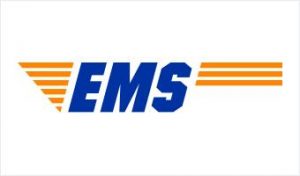
With the help of EMS database management software, you can make unique parts for analysing data. It offers strong vendor support for the majority of your database management software. The application is meant to help customers, especially those who want to keep an eye on existing databases.
Pros
- The database system’s performance is enhanced through simpler maintenance.
- EMS integrates with a number of SQL tools.
- On databases, many SQL queries may be easily executed.
Cons
- The mechanism for granting access to several users can become challenging.
- Slow to handle numerous database items simultaneously
#13. Redis
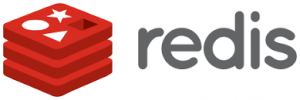
The fact that Redis is written in ANSI C, which promises faster performance on all operating systems, may intrigue programmers. The DBMS tool also offers a variety of data types, including hashes, lists, and sets, all of which can handle high-performance queries. It also has a data structure in its own memory that can index streams, bitmaps, and hyper logs.
Pros
- The programme is set up to duplicate several databases.
- Automatic data splitting is offered.
Cons
- For non-developers, the persistence of on-disk transactions at many levels might be perplexing.
#14. IBM DB2

IBM DB2’s most recent version executes queries more quickly than before. Most languages used in data science are now supported by the DBMS tool, which can handle both simple and complex frameworks. Users are drawn to the software mostly because of how simple it is to install and set up and how much data can be stored instantaneously.
Pros
- It supports both private and cloud systems and has AI-specific features made for managing and structuring complicated data.
Cons
- A non-developer could find the DBMS tool’s functional features to be too much.
#15. Teradata
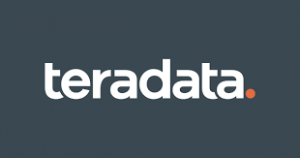
One of the first database management software was Teradata. Data import and export are processed with flawless speed. In addition to real-time computing, it can quickly disseminate huge databases. The DBMS tool’s data analytics is renowned for enabling effective enterprise-level business operations.
Pros
- It features carefully thought-out authorization restrictions to follow or gather your data.
- Flexible multi-variant data formats for combining data storage
Cons
- The third-party tools’ response times are frequently slow.



